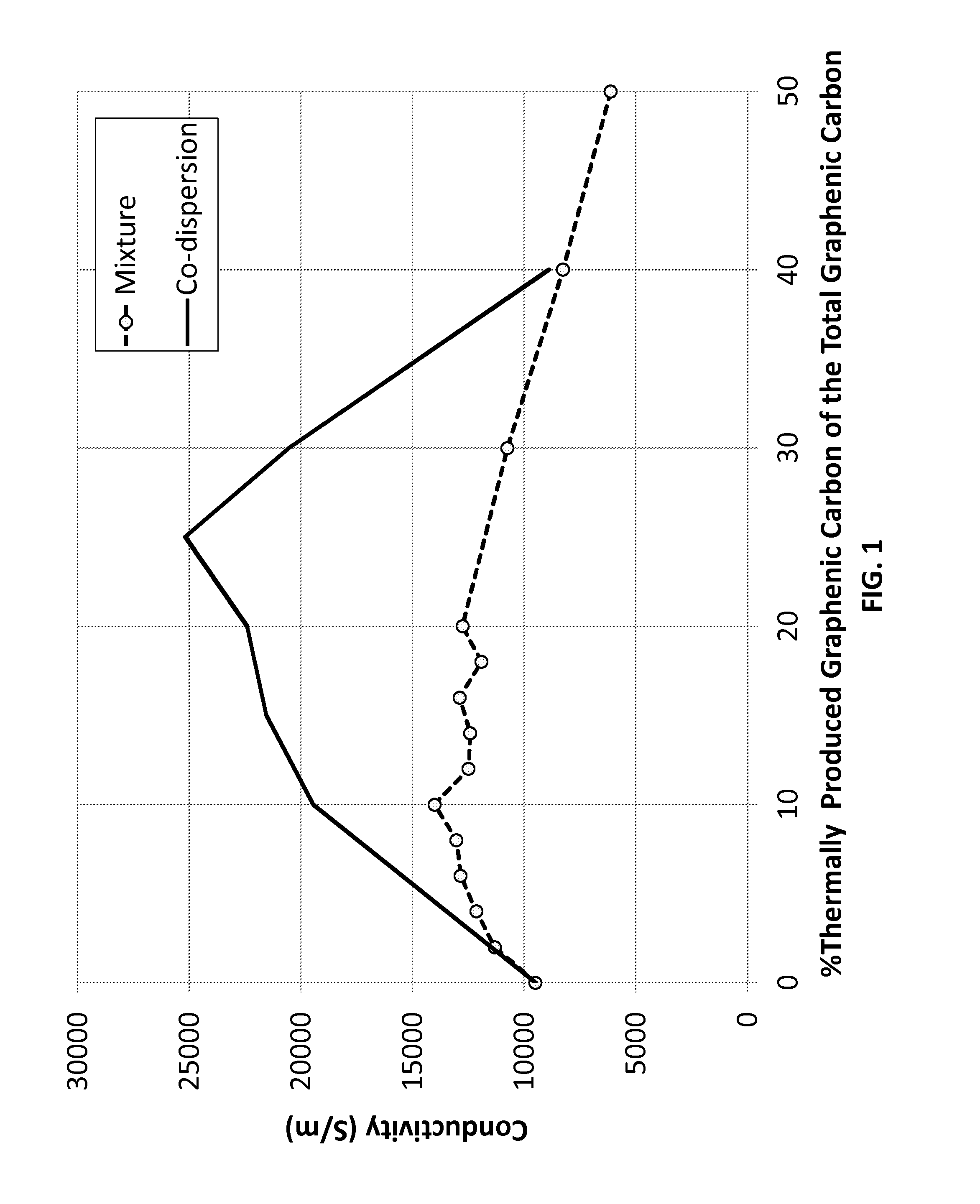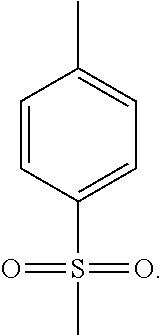Graphenic carbon particle co-dispersions and methods of making same
a technology codispersions, which is applied in the direction of electrically-conductive paints, conductors, non-metal conductors, etc., can solve the problems of difficult dispersal of graphenic carbon particles in various media
- Summary
- Abstract
- Description
- Claims
- Application Information
AI Technical Summary
Benefits of technology
Problems solved by technology
Method used
Image
Examples
example 1
[0067]The compositions summarized in Table 1 were dispersed by adding 70 g of the following composition into 8 oz. glass jars with 220 g of SEPR Ermil 1.0-1.25 mm milling media. All of the compositions were formulated comprising 60.95 g of n-methyl-2-pyrrolidone, 7.0 g total of graphenic carbon particles, and 2.05 g of solvent-born block copolymer dispersant (which comprises 43 weight % n-butyl acetate and 57 weight % block copolymer as disclosed in US 2008 / 0188610). The samples in the jars were shaken for 4 hours using a Lau disperser (Model DAS 200, Lau, GmbH). After shaking, the dispersions were diluted with additional n-methyl-2-pyrrollidone before filtering off the milling media. The P / B (pigment to binder ratio) in each composition is 6.
TABLE 1DispersionsSample:ABCDEFGHIJ% M-25010010090858075706050% TGC1000010152025304050% TS6.010.78.68.78.38.28.27.59.59.1
[0068]In Table 1, the designation M-25 stands for xGnP-M-25 exfoliated graphenic carbon particles commercially available fr...
example 2
[0069]Sample A from Table 1 containing only TGC graphenic carbon particles was mixed with Sample B from Table 1 containing only M-25 graphenic carbon particles in different ratios, as listed below in Table 2. Each mixture was made by adding the appropriate amount of each sample together into a glass jar and vigorously stirring with a stir blade until thoroughly mixed. The P / B for each resulting composition is 6.
TABLE 2MixturesSample:12345678910111213% M-2598969492908886848280706050% TGC2468101214161820304050
example 3
[0070]Samples C through J from Table 1 and Samples 1 through 13 from Table 2 were applied as 1-2 mm wide lines in a serpentine circuit pattern to a 2×3 inch glass slide (Fisherbrand, Plain, Precleaned) using a dispensing jet (PICO valve, MV-100, Nordson, EFD) and a desktop robot (2504N, Janome) and then dried in an oven at 212° F. for 30 minutes. The electrical conductivity was determined by first measuring the resistance of the serpentine circuit vs. the length of the circuit line. Then, the cross-sectional area of the serpentine lines was measured using a stylus profilometer (Dektak). Using the measured values for the cross sectional area (A) and the resistance (R) for a given length (L) of the circuit, the resistivity (ρ) was calculated using the equation ρ=RA / L. Then the conductivity (σ) was calculated by taking the reciprocal of the resistivity, σ=1 / ρ. Conductivity results are shown in Table 3 in units of Siemen per meter.
TABLE 3Electrical ConductivitySampleC12345678910% TGC024...
PUM
| Property | Measurement | Unit |
|---|---|---|
| Percent by mass | aaaaa | aaaaa |
| Percent by mass | aaaaa | aaaaa |
| Electrical conductivity | aaaaa | aaaaa |
Abstract
Description
Claims
Application Information
 Login to View More
Login to View More - R&D
- Intellectual Property
- Life Sciences
- Materials
- Tech Scout
- Unparalleled Data Quality
- Higher Quality Content
- 60% Fewer Hallucinations
Browse by: Latest US Patents, China's latest patents, Technical Efficacy Thesaurus, Application Domain, Technology Topic, Popular Technical Reports.
© 2025 PatSnap. All rights reserved.Legal|Privacy policy|Modern Slavery Act Transparency Statement|Sitemap|About US| Contact US: help@patsnap.com



